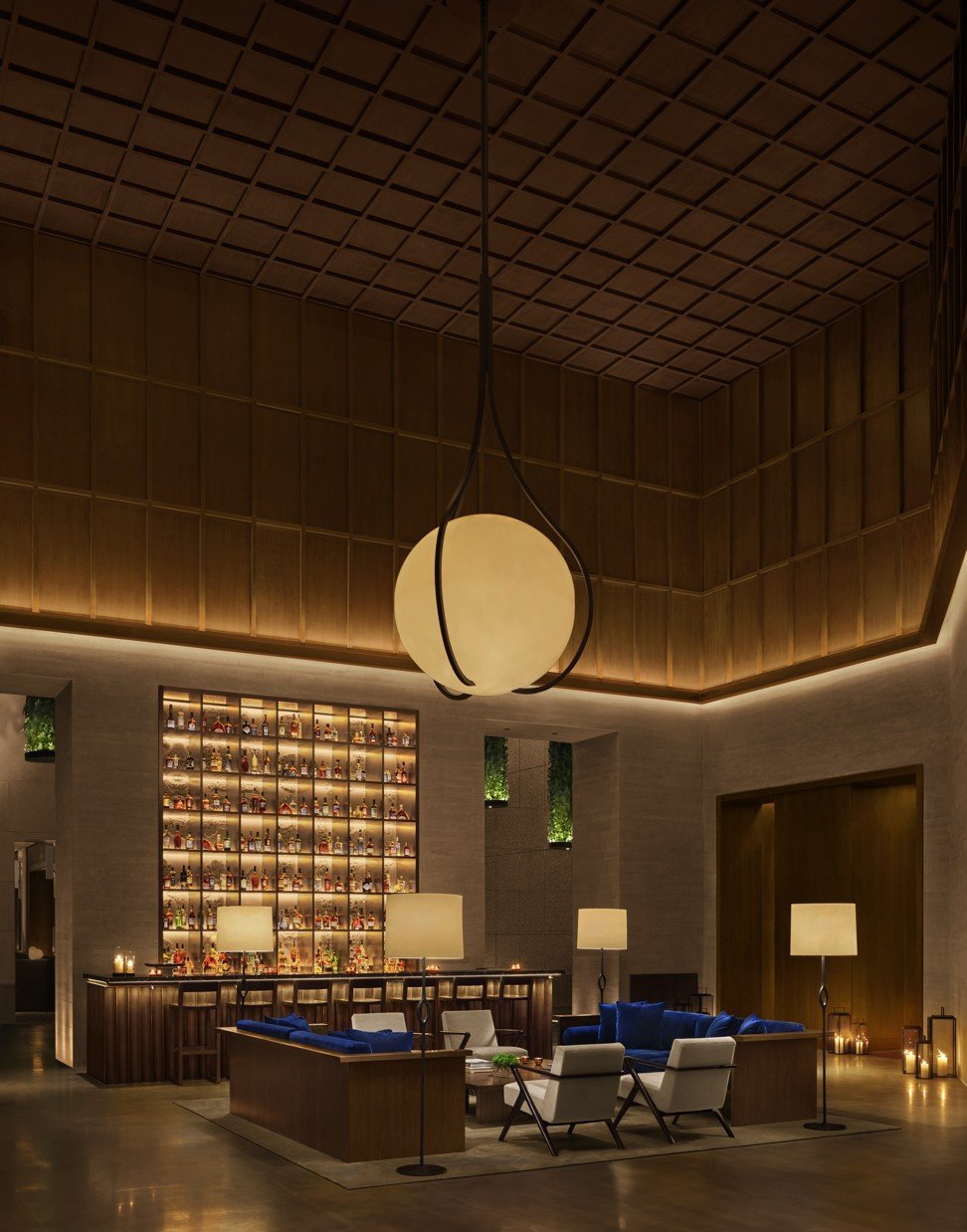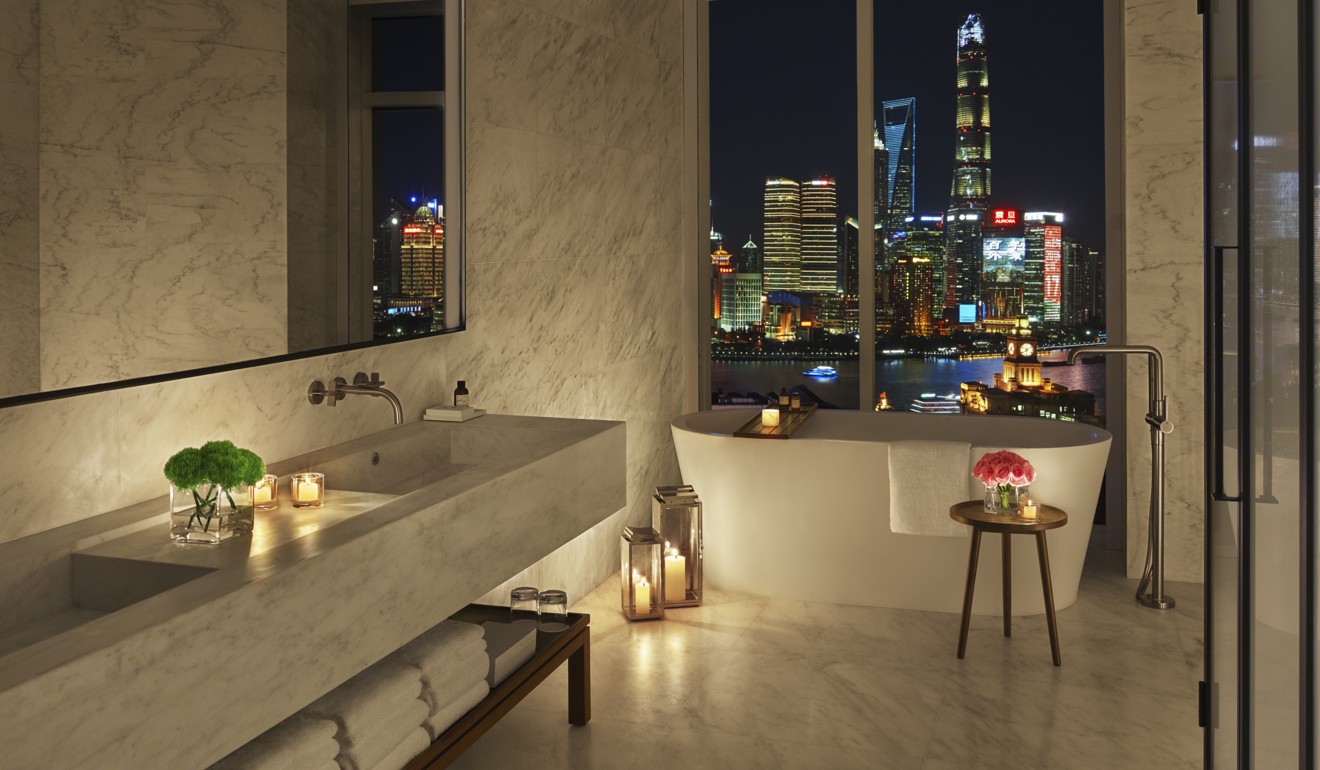
From Studio 54 to Shanghai Bund, hotelier sticks to tried and tested, winning formula
- Glamour and glitter are givens wherever New York club legend Ian Schrager opens a hotel, and the Shanghai Edition, his second hotel in China, is no exception
- ‘I try to create magic every time,’ says the entrepreneur
When it comes to hotel design, veteran hotelier and real estate developer Ian Schrager believes in sticking with what he knows best: a well-tested formula of glittering glamour – lots of it – with a touch of what he calls “alchemy”.
Schrager, a Brooklyn-born law graduate, has had plenty of time to hone his famous blend. His entered the world of hospitality in the 1970s via one of the most iconic nightclubs in the world, New York’s Studio 54, which he co-founded with college friend Steve Rubell.
Asia’s first vertical forest could reshape how cities fight climate change
Infamous for its velvet-rope, in-crowd door policy and freewheeling louche style, Studio 54 attracted guests such as Truman Capote, Diana Ross and Bianca Jagger, who infamously celebrated her birthday by entering on a white horse.
When Schrager and Rubell sold the business 30 months after opening it, they were given an IOU and discovered they had become owners of the Morgans Hotel in New York.
“We didn’t know anything about hotels and didn’t have any money, but we saw hotels as a natural adjunct to the nightclub business,” Schrager says. “Of course there are differences, but you’re looking after guests so there are also a lot of similarities.”

Schrager quickly realised that to make their hotel stand out he would have to create something special “with excitement and glamour in the air”. So he drew on the exposure Studio 54 had given him to film, theatre, stage sets, fashion and graphics, and turned it into a lifestyle.
“We broke all the rules,” he says with a laugh. “And it worked.”
This approach may seem obvious today but it was revolutionary then to transform a hotel lobby and restaurants into social spots where locals vied to be seen. Similarly groundbreaking was the introduction of minimalist, yet luxurious, contemporary guest rooms that felt like upscale New York residences.

It still seems to work: last month, Schrager opened a 145-room hotel just off The Bund in Shanghai to great fanfare – an impressive feat given the city has seen a wave of new luxury hotels opening this year. It is Schrager’s second in China in partnership with Marriott International, the other being a 20-hectare (50-acre) resort in Sanya on the southern holiday island of Hainan that opened in late 2016 and has three art galleries and a private man-made “ocean” (38 million litres – 10 million gallons – of seawater are pumped in each day and recycled every 32 hours).
This year he has also opened Edition hotels – a chain of luxury boutique hotels – in Bodrum, Barcelona and Abu Dhabi. Next year, The Times Square Edition in New York and The West Hollywood Edition have planned openings in the first quarter. There are already Edition hotels in London, Miami and New York.
“I am not interested in just doing hotels that are interesting or well done; I try to create magic every time,” Schrager says in his distinctive Brooklyn rasp when we meet at his New York home, an 8,500 square foot (790 square metre) apartment designed by Herzog & de Meuron with interiors by British designer John Pawson.

“I want to continue to evolve and keep getting better and better and more refined at what we do. It is a necessity of this business, but I also don’t want to leave my good ideas behind like a lot of people do.”
I ask whether his signature Schrager style works as well in China as it does in New York or London.
“Working in China is different,” he says. “China is changing so fast. It is like landing on a comet and we don’t know what it will be like in five years from now, so the only way [to be a success] is to stay true to ourselves. We have to do what we do and make little adjustments because of the culture.”
These adjustments relate primarily to how the Chinese often travel as an extended family, so rooms need to be designed to accommodate more beds. In Sanya, Schrager says he has also noticed that when local guests take their children to the play area they stay there with them.
“In America, they drop them off and leave, so [at Sanya] we provide space for them to feel comfortable while their kid plays.”

Schrager is the first to admit he is not a professional designer, but says he likes to work very closely with those designers he commissions, such as the Shanghai-based studio Neri & Hu which worked on his latest hotel in China. Notorious for micromanaging his projects, he chuckles when asked how close is “close”.
“It’s like when a movie director gets a set designer or special effects guy. The director still has to make the thing work. I have to work with a designer who feels confident and doesn’t feel threatened by a client who is very, very, very engaged.”
Schrager first came across Neri & Hu’s work at The Waterhouse hotel in Shanghai. “I loved it! I loved the rawness. I loved the vibe.”

A large part of the Shanghai Edition – the area that houses the restaurants, bars, event spaces and the spa – occupies the refurbished former art-deco headquarters of the Shanghai Power Company that was built in 1929. A newer skyscraper connected to the building houses the 145 guest rooms.
When we try to incorporate something that is Chinese, it is a subtle thing
The two buildings are joined at the ground floor with a sleek lobby bar and lounge with low-slung sofas draped with trademark Schrager fur throws. Further in, a dramatic 26-metre-high atrium is decorated with cascades of hanging plants.
In the newer tower, guest rooms evoke a New York apartment aesthetic with a black, white and tan palette and walls and floors in light oak. Bathrooms are finished in white marble, detailed in contrasting black metal.
On the fifth floor, a swimming pool appears as though carved from a solid mass of pietra serena sandstone.
The leisure and entertainment part of the hotel houses three restaurants and five bars, two on the rooftop. The Lobby Bar is inset with a bespoke plaster relief artwork inspired by carvings on shikumen, traditional Shanghai stone-gated housing, characteristic of the city’s fast-disappearing, traditional urban typology. There is also a nightclub, Electric Circus, that pays homage to Studio 54, and a gentlemen’s club lounge with a karaoke room.
Step inside this spaceship-inspired home in South Africa
Designer Lyndon Neri, co-founder of Neri & Hu, says the Shanghai spirit is also reflected in custom-designed lantern-inspired lighting, including the lobby’s gigantic lantern by French designer Eric Schmitt, and Asian-inspired furniture and accessories in the rooms.
“When we try to incorporate something that is Chinese, it is a subtle thing,” Schrager says. “In Sanya we might have some Chinese-inspired screens but if I was doing a hotel in Beijing it would be different to Shanghai. They are two different cities.”
Neri says that working in China forces everyone to evolve and be creative in ways they might not expect.
“Ian is actually quite open-minded with new ideas and we are very much aligned with him and his team’s goal to push boundaries, but often we find ourselves dealing with the limitations of the Chinese construction condition,” he says.
Challenges aside, Schrager’s design approach appears well placed.
“We bring the local inside,” he says. But, in Shanghai at least, New York is never far away.

